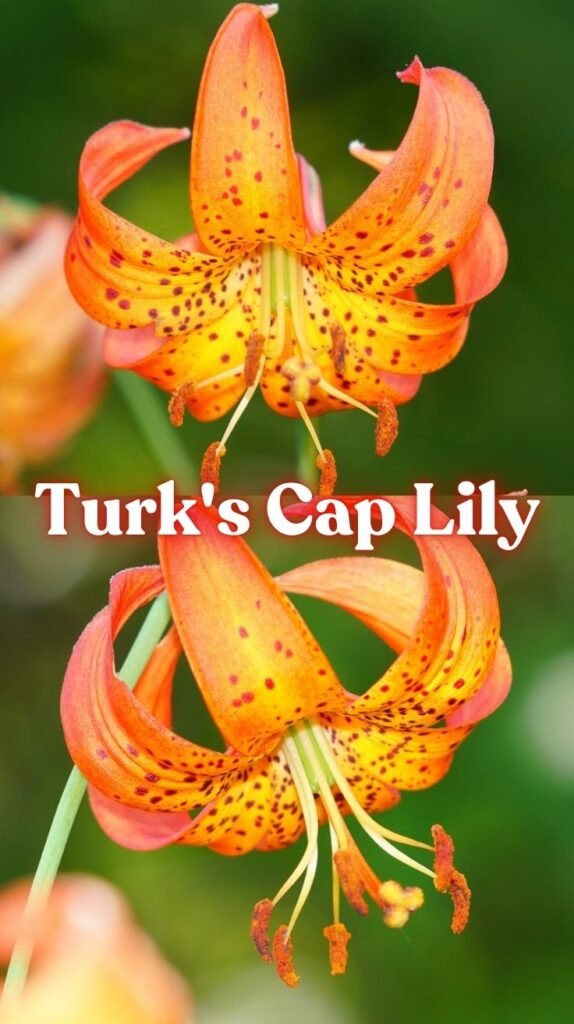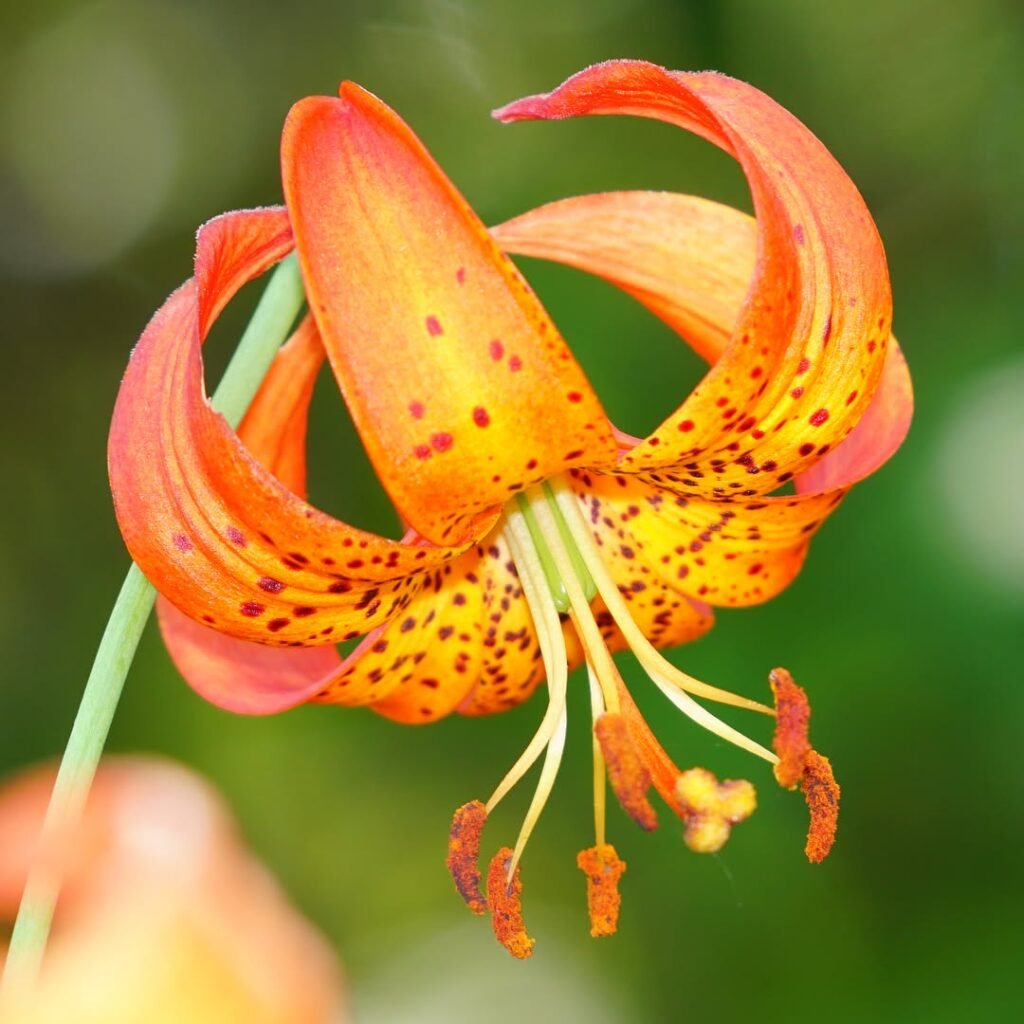Learn how to grow and care for Turk’s Cap Lily, a beautiful native plant that’s easy to grow and attracts pollinators. Get tips from expert gardener Ashley Scott.

Have you ever seen a flower that looks like it’s wearing a fancy hat? That’s the Turk’s Cap Lily, a stunning native plant that’s sure to turn heads in any garden. With its vibrant orange blooms and unique recurved petals, this lily is a showstopper in any landscape. I’m Ashley Scott, and with 10 years of gardening experience, I’ve had the joy of growing Turk’s Cap Lily in my own backyard. Today, I’m excited to share everything I’ve learned with you so you can bring this beauty to your garden too!
What is Turk’s Cap Lily?

Turk’s Cap Lily, scientifically known as Lilium superbum, is a standout among North America’s native lilies. It’s the largest and most spectacular of its kind, reaching heights of up to 6 feet and producing as many as 40 flowers on a single plant! Each bloom is a work of art—six bright orange petals with dark spots curve backward, revealing a green star at the center. The flowers hang downward, creating a dramatic effect that’s hard to miss. It’s no wonder pollinators like butterflies and hummingbirds adore it! Source
Growing Conditions for Turk’s Cap Lily
To grow Turk’s Cap Lily successfully, you’ll need to set it up with the right environment. This plant loves moist, well-drained soil rich in organic matter—think compost or aged manure. It’s pretty flexible with light, thriving in full sun but also tolerating partial shade, which makes it perfect for woodland gardens or spots with dappled sunlight. When planting Turk’s Cap Lily bulbs, dig a hole 5 to 6 inches deep, pop the bulb in, and give it a good watering to help the roots settle. Source
Care Tips for Turk’s Cap Lily
Once your Turk’s Cap Lily takes root, it’s fairly easy to care for. Here’s what I’ve found works best:
- Watering: Keep the soil consistently moist, especially during dry spells. This plant doesn’t like to dry out!
- Fertilizing: In spring, I add a balanced fertilizer (like a 10-10-10 mix) to give it a boost for growth and blooms.
- Mulching: A layer of mulch around the base helps retain moisture and keeps weeds at bay.
With these simple steps, your Turk’s Cap Lilies will thrive with minimal fuss. Source
Common Questions About Turk’s Cap Lily
I often get asked a few questions about Turk’s Cap Lily, so let’s clear up some confusion:
- Are Turk’s Cap Lily and Tiger Lily the same? Nope! While they look alike, Turk’s Cap Lily (Lilium superbum) has that signature green star in the center, while Tiger Lily (Lilium lancifolium) doesn’t.
- How deep to plant Turk’s Cap Lily bulbs? Aim for 5 to 6 inches deep—it gives the roots plenty of room to grow strong.
- When to plant Turk’s Cap Lily bulbs? Fall is the sweet spot, just before the first frost, so they can establish over winter.
These little distinctions can make a big difference in your garden! Source
My Personal Experience with Turk’s Cap Lily
I’ll never forget the first time I saw a Turk’s Cap Lily in bloom. It was at a friend’s garden, and I was blown away by the size and vibrancy of those orange flowers. I had to have one! That fall, I planted some Turk’s Cap Lily bulbs in my yard, and by the next summer, it was like a fireworks show in my garden. The hummingbirds zipped around, and butterflies flocked to the blooms—it quickly became my favorite plant. Every year, I look forward to that moment when the first flower opens. It’s pure magic!
More Resources for Your Garden
Want to dive deeper into gardening? Check out my article on Native Plants for Your Garden for more ideas to beautify your space. Curious about growing other lilies? Take a peek at Lily Care 101 on my site. For even more on Turk’s Cap Lily, I recommend these trusted sources:
Frequently Asked Questions
Here are some quick answers to common questions about Turk’s Cap Lily—perfect for featured snippets or asking your voice assistant!
- Q: When is the best time to plant Turk’s Cap Lily bulbs?
A: The best time is in the fall, before the first frost hits. - Q: How deep should I plant Turk’s Cap Lily bulbs?
A: Plant them 5 to 6 inches deep in well-drained soil. - Q: Can Turk’s Cap Lily grow in shade?
A: Yes, it does well in partial shade—great for woodland gardens!
Growing Turk’s Cap Lily from Seed
If you’re wondering how to grow Turk’s Cap Lily from seed, it’s a bit trickier than bulbs but totally doable. You’ll need to stratify the seeds—pop them in a moist medium (like damp sand or peat) and store them in the fridge for 6 to 8 weeks. After that, plant them in a seed tray and keep them warm and moist. It takes patience, but watching those tiny seedlings sprout is so rewarding!
Why I Love Turk’s Cap Lily
With a decade of gardening under my belt, I can tell you Turk’s Cap Lily is one tough and beautiful plant. It’s bounced back from tough summers and still puts on a show every year. My top tip? Don’t skimp on water—it’s the secret to those jaw-dropping blooms. Trust me, once you grow this lily, you’ll see why it’s a must-have for any garden.
Conclusion
In short, Turk’s Cap Lily is a gorgeous, easy-to-grow native plant that brings color and life to your garden. Its bold orange blooms and unique shape make it a standout, and it’s a magnet for pollinators. Whether you’re a newbie or a seasoned gardener like me, I encourage you to try planting some Turk’s Cap Lily bulbs this fall. Give it the right care, and come summer, you’ll have a floral display that’ll make your neighbors jealous!




